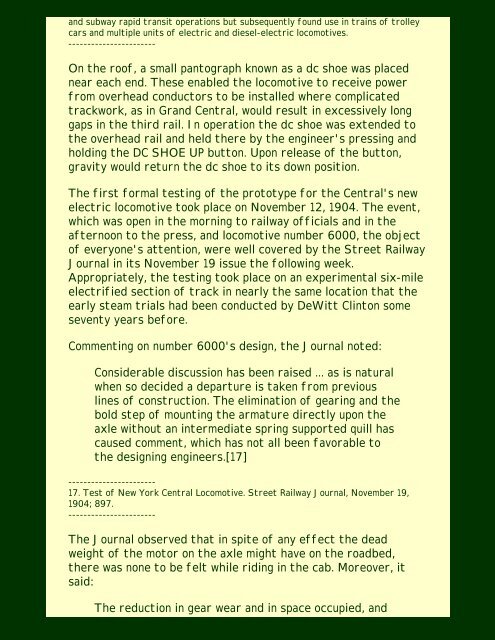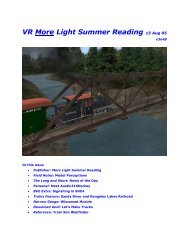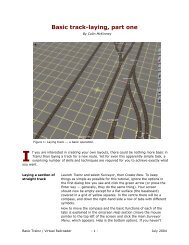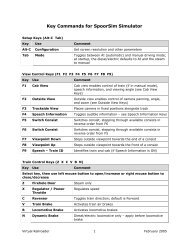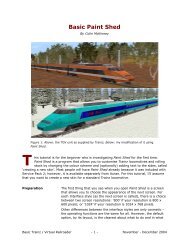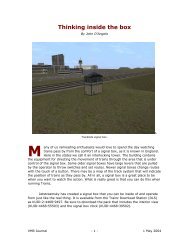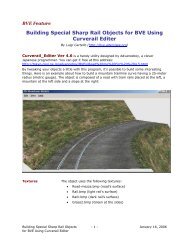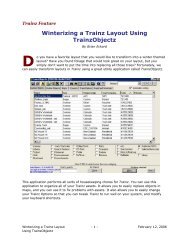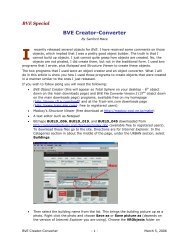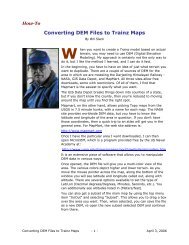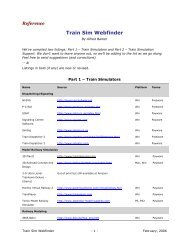Old Maude, Preface - Virtual Railroader
Old Maude, Preface - Virtual Railroader
Old Maude, Preface - Virtual Railroader
Create successful ePaper yourself
Turn your PDF publications into a flip-book with our unique Google optimized e-Paper software.
and subway rapid transit operations but subsequently found use in trains of trolley<br />
cars and multiple units of electric and diesel-electric locomotives.<br />
-----------------------<br />
On the roof, a small pantograph known as a dc shoe was placed<br />
near each end. These enabled the locomotive to receive power<br />
from overhead conductors to be installed where complicated<br />
trackwork, as in Grand Central, would result in excessively long<br />
gaps in the third rail. In operation the dc shoe was extended to<br />
the overhead rail and held there by the engineer's pressing and<br />
holding the DC SHOE UP button. Upon release of the button,<br />
gravity would return the dc shoe to its down position.<br />
The first formal testing of the prototype for the Central's new<br />
electric locomotive took place on November 12, 1904. The event,<br />
which was open in the morning to railway officials and in the<br />
afternoon to the press, and locomotive number 6000, the object<br />
of everyone's attention, were well covered by the Street Railway<br />
Journal in its November 19 issue the following week.<br />
Appropriately, the testing took place on an experimental six-mile<br />
electrified section of track in nearly the same location that the<br />
early steam trials had been conducted by DeWitt Clinton some<br />
seventy years before.<br />
Commenting on number 6000's design, the Journal noted:<br />
Considerable discussion has been raised ... as is natural<br />
when so decided a departure is taken from previous<br />
lines of construction. The elimination of gearing and the<br />
bold step of mounting the armature directly upon the<br />
axle without an intermediate spring supported quill has<br />
caused comment, which has not all been favorable to<br />
the designing engineers.[17]<br />
-----------------------<br />
17. Test of New York Central Locomotive. Street Railway Journal, November 19,<br />
1904; 897.<br />
-----------------------<br />
The Journal observed that in spite of any effect the dead<br />
weight of the motor on the axle might have on the roadbed,<br />
there was none to be felt while riding in the cab. Moreover, it<br />
said:<br />
The reduction in gear wear and in space occupied, and


